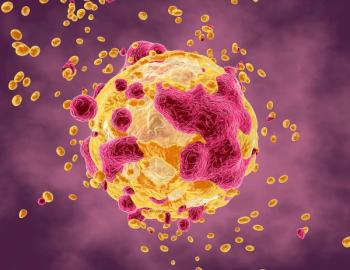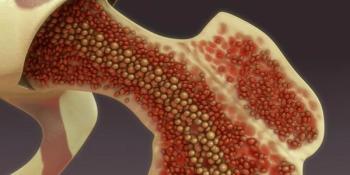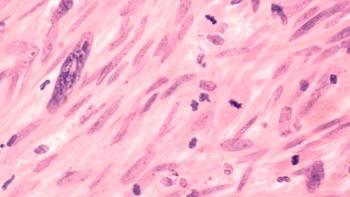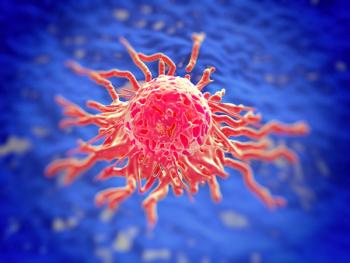
Trabectedin Superior to Dacarbazine for Leiomyosarcoma, Liposarcoma
Trabectedin was found to offer superior disease control to dacarbazine in patients with advanced liposarcoma and leiomyosarcoma.
Trabectedin was found to offer superior disease control to dacarbazine in patients with two types of advanced soft-tissue sarcoma (STS), liposarcoma and leiomyosarcoma, according to an interim analysis of a randomized phase III trial.
These two types of sarcomas are the most common soft-tissue sarcomas after gastrointestinal stromal tumors. “The prognosis for patients with advanced or metastatic STS is poor, with an estimated mean survival of 12 to 15 months,” wrote study authors led by George D. Demetri, MD, of the Dana-Farber Cancer Institute in Boston. Several phase II studies showed that trabectedin, with a “complex mechanism of action that affects key cell biology processes in tumor cells and the tumor microenvironment,” has activity in metastatic STS.
The new trial compared trabectedin to dacarbazine in 518 patients with either leiomyosarcoma or liposarcoma. All patients had unresectable, locally advanced or metastatic disease, and were heavily pretreated. Results were
The median progression-free survival (PFS) for patients treated with trabectedin (n = 345) was 4.2 months, compared with 1.5 months for the dacarbazine group (n = 173). This yielded a hazard ratio (HR) of 0.55 (95% CI, 0.44–0.70; P < .001), and this benefit was preserved across all of 19 subgroups analyzed. Furthermore, the HR of 0.55 was the same specifically in leiomyosarcoma and in liposarcoma patients.
There were no complete responses in either treatment group, though partial responses were more common in the trabectedin group (9.9%) than in the dacarbazine group (6.9%; P = .33). The median duration of response was also longer with trabectedin.
In this interim analysis only half the death events required for full overall survival (OS) analysis had occurred. The results did favor the trabectedin group, with a 13% reduced risk of death, the authors wrote. They added that the safety of both drugs was consistent with well-characterized adverse event (AE) profiles, with most AEs of grade 1 or 2.
“Given the historical difficulty in demonstrating OS improvement, the clinical documentation of disease control, measured as PFS and [clinical benefit rate], has been proposed as a measure of clinically relevant efficacy in advanced sarcomas,” they concluded. “The results of this large, randomized trial support the activity of trabectedin as an effective anticancer agent in this population of patients who have rare but life-threatening malignancies.”
In an
Newsletter
Stay up to date on recent advances in the multidisciplinary approach to cancer.


















































































